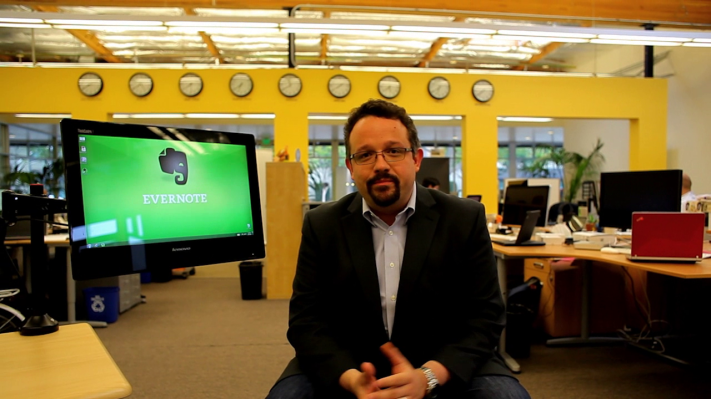There’s a conundrum facing software developers these days: Wearable tech is clearly an area of keen interest among consumers and industry watchers, but how to prepare for mass market adoption in this nascent space? There are still so many variables, so much left up in the air, that it’s hard to pick any areas of investment with guaranteed return on investment. But Evernote CEO Phil Libin has a warning for software companies taking a wait-and-see approach – if you do so, you risk being left behind.
Evernote is already developing or has developed software for Android Wear, Pebble, Google Glass, Samsung Gear and more, and Libin told me that while it’s far too early to pick a winner, or to pretend that anything they’re doing now will look at all like finished products available to a mature wearables market, the experimentation isn’t considered optional at his company. And to look at just how broad Evernote’s approach to the so-called wearables market is, and what that might encompass, you can look to the company’s launch of its Market for physical goods last year, which at the time left many observers scratching their heads.
“A big reason for why we even launched the Evernote Market over six months ago was to get experience designing for the real world,” Libin explained. “It’s going to be very hard for companies to be successful if they don’t understand how to design for the physical world. The whole nature of these devices is that they’re going to succeed or fail based on the experience that they give you, and the whole experience is very tactile and very tangible, it’s not just sitting in front of a computer typing.”
Working with companies that produce goods on partnerships isn’t strictly about branding and name recognition; in fact, it’s more about learning how a future of interconnected hardware (both wearable, and the kind that’ll pervade every aspect of our lives) will work with and augment software. Evernote’s goal is to be the ultimate productivity aid for knowledge workers, and in the future, fulfilling that role might require much more than just being a codex or repository for the storage and recall of traditional media.
“Even the design work that we’re doing on styluses and scanners and wallets and things like that, it’s there to get our people thinking about designing for the real world,” he said. “How do people interact with a watch? Is a watch really the right metaphor? How do people interact with wrist-mounted things? Where do people hold their hands?”
That’s not the end of the questions Evernote is asking, however. It extends beyond those you might imagine a software company designing for platforms like those emerging in the smartwatch category would naturally ask itself. Libin says the wearable future won’t limit itself to just a shrunk down version of smartphone you wear on your wrist. There’s a whole range of material science to think about, too.
“What kind of textures make sense? Can you give someone information based on tactile input, based on what something feels like? How do you think about shapes and colors? How do people move? How big is a backpack that’s too big to take on a train? What if you change some aspect ratios, how comfortable are people doing things while they’re sitting or standing?”
Libin says he thinks a lot of companies will be caught unawares by this subtle but tectonic shift in how software gets made. It’s a matter of an entire side to the art opening up anew, and that could require a change in perspective that some companies just can’t manage.
“This whole art was largely irrelevant for software companies for the last few decades, and now it’s going to become highly relevant. I think you’re going to see companies flaming out left and right that just ignored this, and that just focus on what they have been focusing on and are then completely unprepared for this new world.”
It’s still early days for the wearables market, however, and despite the recent upswing in activity by companies like Google and Samsung to exploit this space, it’ll be years before we truly feel the impact of this latest swing in the tech industry. It’s easy to see why others would be taking a wait-and-see approach given the volatility of the market at this early stage, but will failure to act sink some of the industry’s longest sailing ships? Evernote thinks so, and it isn’t about to be counted among those who miss this sea change.
Photo courtesy Flickr user Cory M. Grenier
